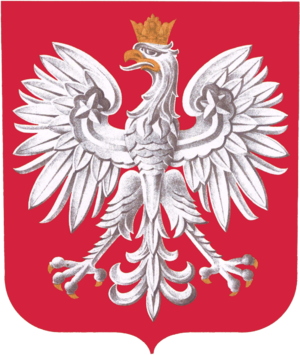Land Restitution in Czechoslovakia and the Czech Republic after 1990
Absztrakt
This article is divided into two parts: the first is devoted to the historical context of restitution; the second to its legal regulation and implementation. In the first part, state interventions in property and post-war land reforms are presented with an emphasis on the so-called second land reform (after 1945), which consisted of three different and relatively independent phases. The first phase (1945) was associated with the confiscation of agricultural property and its redistribution (Presidential Decree No. 12/1945 Coll., regulation of the Presidium of the Slovak National Council No. 4/1945 Coll. SNC). The second phase (1947) aimed at revising the first land reform (Special Act No. 142/1947 Coll.). The third phase (after February 1948) was presented as the new land reform (Special Act No. 46/1948 Coll.), and resulted in collectivisation associated with the establishment of agricultural cooperatives (at the time, four types of cooperatives were distinguished according to the degree of collectivisation, or according to the method of joint production and remuneration: in the first type, there was a joint organisation of sowing, harvesting and the use of mechanisation; the second type introduced remuneration according to the quantity and quality of work performed for the cooperative, regardless of the size of the cooperative share). Within the framework of collectivisation (1948–1960), we may distinguish three phases. In the first phase (up to 1953), the number of unified agricultural cooperatives (including preparatory committees) increased to approximately 8600, which was more than half of the municipalities in the Czech lands (at first, unified agricultural cooperatives of the first type predominated; at the end of 1951 and the beginning of 1952, the number of the third and fourth types of unified agricultural cooperatives increased); during the second phase (1955–1960), the number of unified agricultural cooperatives increased to approximately 12,500, mainly of the third and fourth types; in the third phase (the 1970s), cooperatives merged into larger economic units (in 1980, there were 1722 of them). The process of collectivisation was accompanied by various forms of coercion, which finally resulted in the persecution of the peasantry – in addition to kangaroo courts against the opponents of collectivisation, ‘Action K’ (Kulak) took place from November 1951 to May 1952 and from November 1952 to July 1953 (based on the so-called ‘directive of the three ministers’ of October 1951) to resettle the families of convicted peasants. After both world wars, approximately one third of all the agricultural land in Czechoslovakia was subject to land reform; 4,143,149 hectares of all land was redistributed under the three phases of land reform after 1945, including 2,135,798 hectares of agricultural land. Small beneficiaries obtained 30.9% of the total, or 59.8% of agricultural land; 52.1% of all (especially forest land) belonged to the state. According to the statistics for 1978, the state sector managed 30.6% and the cooperative sector 62.1% of agricultural land in Czechoslovakia; in 1989, the socialist sector created a 98.7% share in all the agricultural land, out of which the cooperative sector, including crofts, created 67.8%, the state sector created 30.9%, while independently farming peasants and small landholders created only 1.3%. In the context of the development after the collapse of the communist regime, restitution means the process and the resulting state of redressing some property wrongs that occurred before 1990. It may be understood in a narrower sense (carried out on the basis of restitution legislation after 1990) or in a broader sense, where it includes not only the national but also the international level (including case law). They represented an important tool for coming to terms with the past, but also for the transformation of the economy and society after the collapse of the communist regime. Gradually, between 1990 and 2012 nine main restitution regulations were adopted in the territory, most of which were repeatedly amended. The Czech Constitutional Court also repeatedly intervened in the restitution legislation (in 1994 and 1995, by cancelling the condition of permanent residence for determining restitution entitlement; and in 2005 and 2018, by cancelling the so-called ‘restitution full stop’ – referring to the possible end of the process of dealing with restitution cases). From the perspective of the definition of property wrongs, a general range of facts was mostly chosen (a more specific definition occurred in the case of municipal property, church property defined in the 1990 by enumeration, as well as Jewish property defined in the enumeration at least in part). From the perspective of entity, three laws related only to natural persons, four only to legal entities, and two to both natural persons and legal entities. From the perspective of the subject matter, two laws related to agricultural property, one to non-agricultural property, and six to both agricultural and non-agricultural property. From the perspective of the relevant period, most of the laws had not dealt with reparation of wrongs until 25 February 1948 (although this limit was explicitly mentioned in only three of them); in the case of three acts, it was bound to a later date, while only in the case of two acts did it also apply to wrongs committed before the mentioned date. Finally, from the perspective of the method of restoration of the ownership right, this occurred in two cases directly by law, in five cases by entry into the Land Registry, and in three cases by a decision of an administrative body (the 2012 Church Restitution Act regulated different methods for agricultural and non-agricultural property). For the area of restitutions, Act No. 229/1991 Sb. regulating the ownership relations to land and other agricultural property, (also called the ‘Land Act’), followed by Act No. 243/1992 Coll. (also called the ‘Transformation Act’), was the most important one from the perspective of agricultural and forest property (movable and immovable ones). While the first of them set the decisive period from 25 February 1948, the second also applied to property seized on the basis of confiscation decrees from 1945. The Land Act regulates both the rights and obligations of owners, original owners, users and lessees of land, as well as the competence of the state in regulating ownership and the rights to use the land. To date, it has been amended by 27 acts and 30 implementing regulations have been issued in relation to it. It defined in particular the beneficiaries (Section 4), Obligated entities (Section 5), property subject to restitution (Section 6 et seq. – originally it was 18 and, after the amendment, it was 20 cases), the deadlines for filing the claim (Section 13) and compensations for unreleased or damaged property (in Sections 14 to 16 and Section 20). In 2005, and again in 2018, the Constitutional Court also cancelled the so-called ‘restitution full stop’, by which the state tried to exclude the satisfaction of the restitution claims of beneficiaries in the form of providing replacement land, and leaving only financial compensation. In the case of determining the amount of financial compensation for unreleased land, the Constitutional Court has repeatedly taken the view that the State Land Office is obliged to provide beneficiaries with adequate compensation for confiscated property; however, it fails to do so. The issue of judicial settlement of restitution claims is still alive.
Hivatkozások
Benda J (2013) Restituce majetku bývalých šlechtických rodů po roce 1989, 2nd ed., Tuláček, Praha.
Blažek P, Jech K, Kubálek M et al. (2010) Akce „K“. Vyhnání sedláků a jejich rodin z usedlostí v padesátých letech. Studie, seznamy a dokumenty, Pulchra, Praha.
Blažek P & Kubálek M (eds.) (2008) Kolektivizace venkova v Československu 1948–1960 a středoevropské souvislosti, Dokořán, Praha.
Böhmer O, Duden K & Janssen H (eds.) (1951) Deutsches Vermögen im Ausland. Internationale Vereinbarungen und ausländische Gesetzgebung, Band 3, Verlag des Bundesanzeigers, Köln.
Eliáš K (2016) Dvě pozemkové reformy a státní nabytí vlastnického práva k nemovitostem, Právník 155(3), pp. 209–232.
Eliáš K (2017) Vlastnictví a právo v tenzi mezi stabilitou a proměnlivostí zákonodárství, Academia, Praha.
Horák O (2012) Zásahy státu do soukromoprávních vztahů; Státní zásahy do vlastnických vztahů po 2. světové válce, in: Vojáček L, Schelle K & Tauchen J (eds.) Vývoj soukromého práva na území českých zemí, I. díl, Masarykova univerzita, Brno, pp. 347–368, 391–409.
Horák O (2015) Benda Josef. Restituce majetku bývalých šlechtických rodů po roce 1989, Právník 154(4), pp. 355–356.
Horák O (2017) K proměnám koncepce vlastnického práva od rakouských ústav do současnosti, Právník 155(12), pp. 1109–1123.
Horák O (2021) Vlastnictví a vyvlastnění – z právněhistorické perspektivy, in: Grygar T et al., Vyvlastnění a vyvlastňovací řízení, Wolters Kluwer, Praha, pp. 1–28.
Hraba Z (2013) Kolektivizace a transformace československého a českého zemědělství v letech 1945–2004. Právně normativní pohled, Vladimír Lelek, Praha.
Hraba Z (2016) Kolektivizace, in: Schelle K & Tauchen J (eds.) Encyklopedie českých právních dějin, Sv. III, Aleš Čeněk, Plzeň, pp. 131–135.
Hubálková E (2004) Majetkové restituce. Problematika majetkových restitucí ve světle judiciální interpretace mezinárodní ochrany práv, Aspi, Praha.
Jančík D, Kubů E, Kuklík J, Novotný J & Šouša J (2001) „Spící konta“ ve švýcarských bankách za znárodněný švýcarský majetek v Československu? Československo- švýcarská jednání o tzv. náhradových otázkách (1945–1967), in: Studie k moderním dějinám. Sborník prací k 70. narozeninám Vlastislava Laciny, HÚ AV ČR, Praha, pp. 445–462.
Jäger P & Chocholáč A (2015)Zákon o majetkovém vyrovnání s církvemi a náboženskými společnostmi. Komentář, Wolters Kluwer, Praha.
Jech K (1963) Probuzená vesnice. K dějinám revoluce na našem venkově v letech 1945–1948, NPL, Praha.
Jech K (2008) Kolektivizace a vyhánění sedláků z půdy, Vyšehrad, Praha.
Kalkušová S (2018) Kauza Lex Schwarzenberg. Otazníky kolem vyvlastnění
majetku hlubocké větve Schwarzenbergů, Key Publishing, s. r. o., Ostrava.
Kišš P (2005) Restituce majetku obcí, Eurolex Bohemia, Praha.
Knapp V (1949) Osidlovací právo hmotné, Orbis, Praha.
Kříž J & Valeš V (2013) Zákon o majetkovém vyrovnání s církvemi a náboženskými
společnostmi. Komentář, C.H. Beck, Praha.
Kubačák A & Jacko K (2012) Restituce zemědělského a lesního majetku, 2nd ed.,
Ministerstvo zemědělství, Praha.
Kubačák A (2016) Církevní majetek v proměnách času: restituce historického majetku církví v resortu Ministerstva zemědělství, Ministerstvo zemědělství, Praha.
Kubačák A (2017) Restituce zemědělského a lesního majetku (po roce 1989), in: Schelle K & Tauchen J (eds.) Encyklopedie českých právních dějin, Sv. X, Aleš Čeněk, Plzeň, pp. 529–539.
Kuklík J (2007) Do poslední pence: československo-britská jednání o majetkoprávních a finančních otázkách 1938–1982, Karolinum, Praha.
Kuklík J (2010) Znárodněné Československo. Od znárodnění k privatizaci – státní zásahy do vlastnických a dalších majetkových práv v Československu a jinde v Evropě, Auditorium, Praha.
Kuklík J et al. (2011) Konfiskace, pozemkové reformy a vyvlastnění v československých dějinách 20. století, Auditorium, Praha.
Kuklík J et al. (2015) Jak odškodnit holokaust? Problematika vyvlastnění židovského majetku, jeho restituce a odškodnění, Karolinum, Praha.
Lacina V (1963) Pozemková reforma v lidově demokratické Československé republice, in: Zápas o pozemkovou reformu v ČSR, Československá akademie věd, Praha, pp. 216–219, 230–232.
Lehmann J (2004) Sachherrschaft und Sozialbindung? Ein Beitrag zu Gegenwart und Geschichte des zivilrechtlichen Eigentumsbegriffs, Duncker & Humblot, Berlin.
Maslov S (1927) Princip soukromého vlastnictví v pozemkových reformách poválečné Evropy, [Státní pozemkový úřad], Praha.
Michl J et al. (eds.) (1948) Revise první pozemkové reformy, Orbis, Praha.
Palšová L & Bandlerová A & Ilková Z (2022) Succession and Transfer of Agricultural Land Holding: Evidence from Slovakia, Journal of Agricultural and Environmental Law 17(33), pp. 130–140, https://doi.org/10.21029/ JAEL.2022.33.130
Peroutka F (1934) Budování státu. Díl II. Československá republika v letech popřevratových, F. Borový, Praha.
Ministerstvo zemědělství (1947) Hradecký program, Praha.
Ministerstvo zemědělství a lesního hospodářství (1958) Statistická
ročenka 1956, Praha.
Pešek J et al. (eds.) (2006) Německé menšiny v právních normách 1938–1948. Československo ve srovnání s vybranými evropskými zeměmi, Doplněk; Ústav pro soudobé dějiny AV ČR, Brno; Praha.
Průcha V (1998) Srovnání pozemkových reforem v evropských lidově demokratických zemích, in: Rašticová B (ed.) Zemědělství na rozcestí 1945–1948, Slovácké muzeum, Uherské Hradiště, pp. 57–61.
Průcha V et al. (2004 and 2009) Hospodářské a sociální dějiny Československa 1918–1992, Díl 1 and 2, Doplněk, Brno.
Průchová I (1997) Restituce majetku podle zákona o půdě, C. H. Beck, Praha.
Průchová I (2017) Restituce (po roce 1989), in: Schelle K & Tauchen J (eds.) Encyklopedie českých právních dějin, Vol. X, Aleš Čeněk, Plzeň, pp. 462–471.
Příkopa V (2020) Restituce podle zákona o půdě, C. H. Beck, Praha.
Roszkowski W (1995) Land reforms in East Central Europe after World War One, Institute of political studies PAS, Warsaw.
Rychlík J (1998) Pozemková reforma v českých zemích v letech 1945–1948, in: Rašticová B (ed.) Zemědělství na rozcestí 1945–1948, pp. 16–17.
Rychlík J (2008) Kolektivizace ve střední a východní Evropě, in: Blažek P & Kubálek M (eds.) Kolektivizace venkova v Československu 1948–1960 a středoevropské souvislosti, Dokořán, Praha, pp. 13–29.
Sering M (ed.) (1930) Die agrarischen Umwälzungen im ausserrussischen Osteuropa, Walter de Gruyter & Co., Berlin; Leipzig.
Spáčil J & Barešová E (eds.) (1998) Zemědělské restituce a soudní praxe, C. H. Beck, Praha.
Valeš V (2009) Restituce církevního majetku v České republice po roce 1989, Moravsko-slezská křesťanská akademie, Brno.
Valeš V (2020) Sedmero církevněrestitučních studií, TCF Print s.r.o. ve spolupráci s autorem, Plzeň.
Vomáčka V & Tkáčiková J (2022) Agricultural Issues and the Czech Constitution, Journal of Agricultural and Environmental Law 17(32), pp. 157–171, https://doi. org/10.21029/JAEL.2022.32.157
Winkler P (1994) Majetkoprávní vypořádání s Rakouskem, Právník 133(7), pp. 629–644.
Zeman K (2013) Vývoj vlastnictví k půdě a souvisejících procesů na území ČR od roku 1918 do současné doby, Vysoká škola ekonomická v Praze, Praha.
Zeman K (2015) Analýza restitučních procesů v České republice. Restituce a ostatní procesy transformující vlastnická práva, Univerzita Karlova, Karolinum, Praha.
Zeman K (2017) Analýza privatizace a restitucí v ČR. Transformace národního hospodářství, zejména liberalizace vlastnických práv. Privatizace, restituce a ostatní systémové změny, Univerzita Karlova, Karolinum, Praha.













